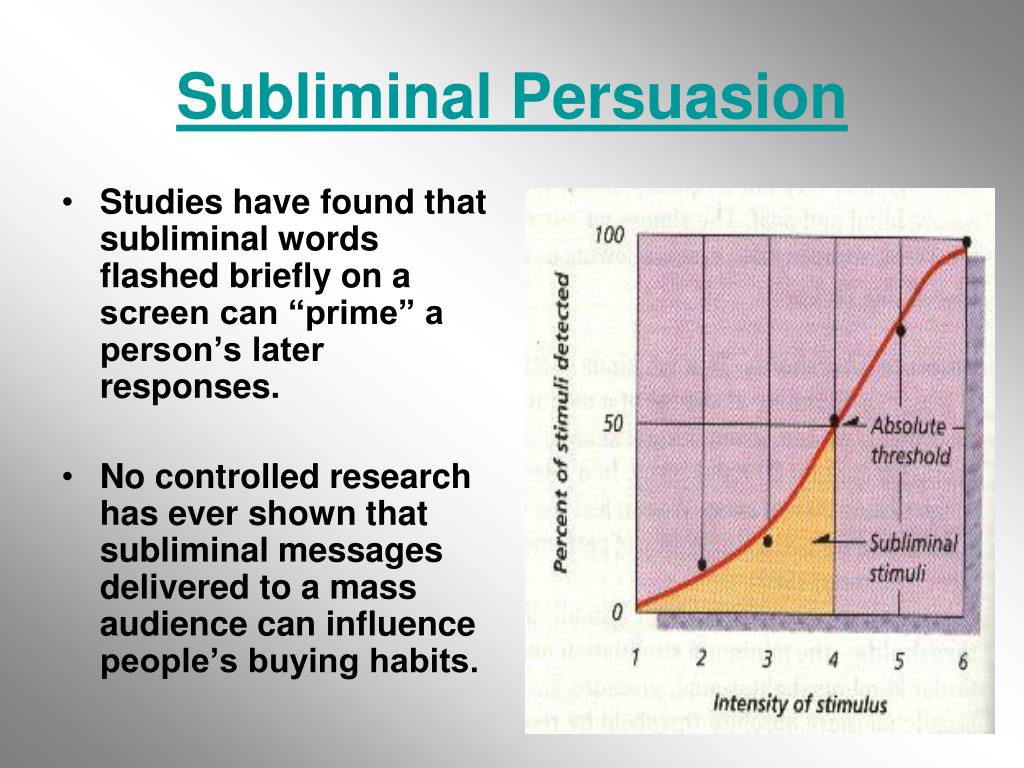

The word “beef” was flashed for several, five-millisecond intervals during a sixteen-minute movie to experimental subjects, while nothing was flashed to control subjects. As only a word or image can be effectively perceived, the simpler features of that image or word will cause a change in behavior (i.e., beef is related to hunger). Though many things can be perceived from subliminal messages, only a few words or a single image of unconscious signals can be internalized. In the end, the study showed 80% of the subjects subconsciously perceived the backward message, meaning they showed a preference for that particular rum. Before the study, participants were able to try to identify any hidden message in the ad, none found any.

A study was done to test the effectiveness of the alcohol ad. The phrase “U Buy” was embedded somewhere, backwards in the picture. This is evident by a pictorial advertisement that portrays four different types of rum. Subconscious stimuli by single words is well known to be modestly effective in changing human behavior or emotions.

Those who were not thirsty, however, were not influenced by the subliminal message since their goal was not to quench their thirst. In his study he found that subliminally priming a brand name of a drink (Lipton Ice) made those who were thirsty want the Lipton Ice. Half of his participants were subliminally primed with Lipton Ice (“Lipton Ice” was repeatedly flashed on a computer screen for 24 milliseconds), while the other half was primed with a control that did not consist of a brand. His study sought to ascertain whether or not subliminally priming or preparing the participant with text or an image without being aware of it would make the partaker more familiar with the product. Karremans did a study assessing whether subliminal priming of a brand name of a drink would affect a person’s choice of drink, and whether this effect is caused by the individual’s feelings of being thirsty. Johan Karremans suggests that subliminal messages have an effect when the messages are goal-relevant. Used in advertising to create familiarity with new products, subliminal messages make familiarity into a preference for the new products. Apart from their controversial use in marketing, subliminal stimuli are employed in scientific research on perception without awareness, or unconscious perception. The near-consensus among research psychologists is that subliminal messages do not produce a powerful, enduring effect on behavior and that laboratory research reveals little effect beyond a subtle, fleeting effect on thinking. Introduced in 1895, the concept became controversial as “subliminal messages” in 1957 when marketing practitioners claimed its potential use in persuasion. Audio stimuli may be played below audible volumes, similarly masked by other stimuli, or recorded backwards in a process called backmasking. Visual stimuli may be quickly flashed before an individual may process them, or flashed and then masked, thereby interrupting the processing. Subliminal stimuli contrary to supraliminal stimuli or “above threshold”, are any sensory stimuli below an individual’s absolute threshold for conscious perception.


 0 kommentar(er)
0 kommentar(er)
